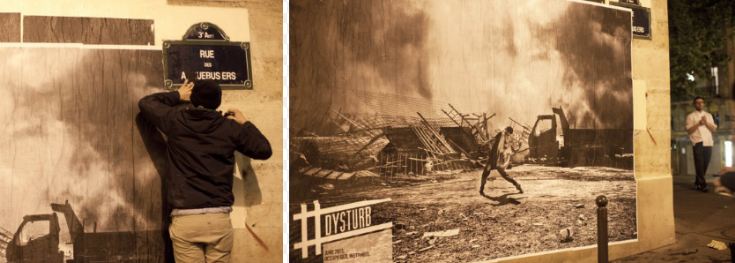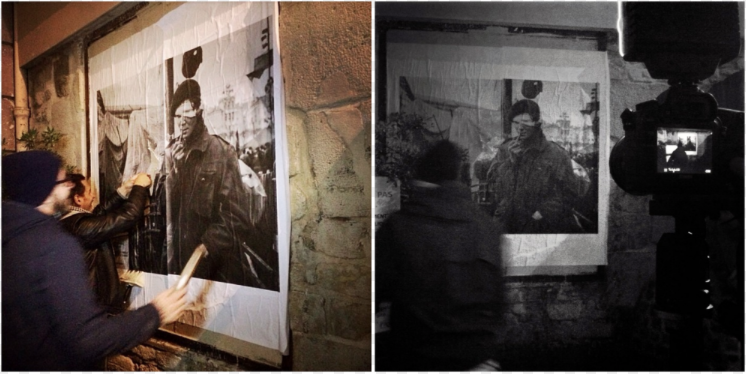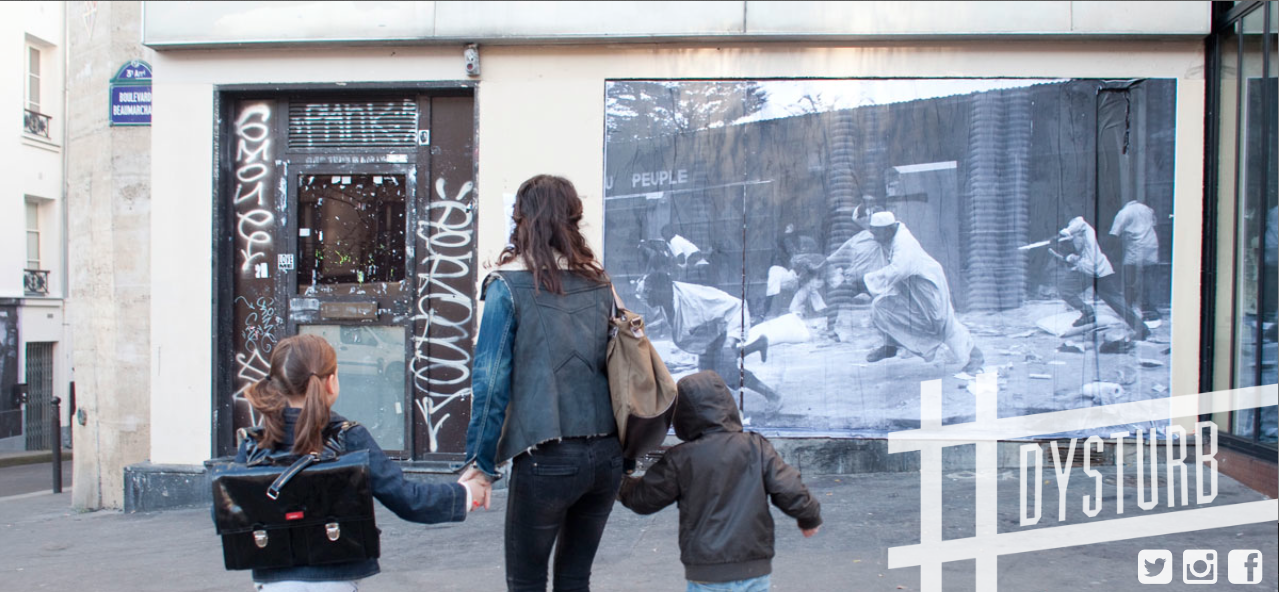What’s the best way to make sure people are aware of what’s really happening around the world? What should a photojournalist do when the mainstream outlets for photographic media decide not to publish the photos he risked his life to take? Well, that’s an issue the French photojournalist Pierre Terdjman and his mates have faced more than once. That has led them to create the urban project Dysturb.
Dysturb is a collective plan of action which encourages photojournalists to take less traditional routes to get their work seen by the general public. By pasting their photos on actual city walls, the photographers become the gatekeepers of the photographic depiction of the news.
In an interview with TIME, Terdjman explained; ‘Each time I finish a story, it’s the same struggle to get my images published. Magazines are rarely interested in showing what’s happening in Egypt, in Georgia, in Afghanistan. Sometimes they’ll publish one or two images, but that’s it. So, everything started from a very selfish idea. I wanted to show my photographs. I wanted to inform people, show them what I’d seen.’
When he came back from a trip to the Central African Republic in February, the French photographer and a few of his friends decided to get on the streets of Paris and paste some printed poster versions of their hard-to-swallow yet brilliant photographs about town.


Terdjman explained how overwhelmingly positive the general public’s response to his actions was, and how this motivated him to take his project further. In fact, he contacted some of his colleagues, including the photographer Benjamin Girette, and invited them to send some of their work to exhibit on the walls of Paris. The French photojournalist explains; “The goal is to raise awareness about what’s actually going on in the world. We’re not looking to make a name or to degrade a city’s public spaces. It’s really about telling the story of what’s happening in CAR, in Egypt, in Ukraine.”
Terdjman and Girette are now working on new features of the website that will enable the viewer to see a map displaying the different locations of the pasted photographs. They explained; ‘On that map, you’ll find the name of the photographer, the caption, but also a link to the full edit of images. We want to create a link between the image, the photographer and the story.’
On the 13th May 2014, the group behind Dysturb paid tribute to their friends and colleagues, Camille Lepage, a 26-year-old photojournalist who was killed on duty in Central African Republic. They took to the streets of Paris and exhibited some of her most striking photographs in an attempt to show the world what one has to go through to photographically depict a conflict.



